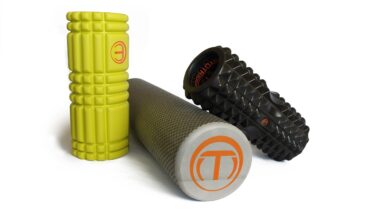The Impact of Poor Posture on Men’s Physical Performance
Poor posture can significantly affect men’s physical performance in various areas, including sports, daily activities, and overall well-being. When individuals maintain suboptimal alignment, their bodies encounter several biomechanical problems leading to decreased strength and efficiency. For instance, slouching can cause muscle imbalances, resulting in weakened muscles and strain. Over time, men may notice increased fatigue, decreased stamina, and a higher likelihood of injuries as their muscles struggle to compensate for the misalignment. Moreover, poor posture affects their cardiovascular system, making it harder to breathe and lowering oxygen intake. This decreased lung capacity can have a direct impact on athletic performance, particularly during high-intensity exercises. To counteract these effects, men should prioritize posture improvement strategies, such as stretching, ergonomic adjustments, and strength training. By investing time into developing good posture habits, men can enhance their physical capabilities, prevent injuries, and ultimately enjoy a more active lifestyle. Embracing proper alignment not only helps improve performance but contributes positively to self-esteem and overall health, both critical aspects of a fulfilling and active life.
In addition to physical performance, poor posture plays a crucial role in men’s mental state and overall confidence. Studies have shown a correlation between body language and psychological states, where slouched or improper posture can lead to feelings of low self-worth, stress, and anxiety. Comparatively, standing tall and maintaining an open posture tends to enhance self-assurance and reduce anxiety levels. Men who adopt a more confident posture tend to experience increased serotonin levels, leading to better mood regulation. Additionally, their interactions with others can also improve, boosting social relationships and professional encounters. Being aware of one’s posture is vital, especially in situations that demand high focus or strong self-representation, such as job interviews or public speaking. By addressing poor posture habits, men can cultivate improved mental resilience, positively influencing how they perceive challenges and opportunities alike. Regular exercise routines that emphasize posture awareness and strength can foster not just physical endurance but can also aid mental clarity. As a result, investing time in posture correction not only encourages physical benefits but simultaneously nurtures a more robust, confident demeanor.
Common Posture Problems Among Men
Men frequently encounter certain posture problems, particularly due to lifestyle choices, occupational hazards, and daily habits. Common issues include forward head posture, rounded shoulders, and excessive lumbar lordosis, often stemming from prolonged computer use or sedentary work. These conditions can ignite discomfort in the neck and back, leading to chronic pain if left unaddressed. Furthermore, improper posture can affect the kinetic chain of movement, causing disruptions in the body’s biomechanics. For instance, individuals might experience knee or hip pain as the body compensates for inefficient muscle alignment. A comprehensive evaluation may reveal weaknesses that contribute to these common issues. Interestingly, many men might not realize that their posture affects how efficiently they engage in workouts or sports. Strength training, flexibility exercises, and targeted physical therapy can play a substantial role in rectifying these postural issues. Also, learning about body mechanics and the importance of ergonomics can help men develop better habits. By recognizing and addressing these posture problems, men can enhance their overall physical performance while also reducing their risk of injury.
In addition to physical ailments, poor posture can lead to long-term musculoskeletal disorders. Workplace ergonomics often neglect the importance of proper posture, with individuals frequently adjusting their body to fit their work environments rather than enhancing those environments for their health. Consequently, men experience detrimental effects such as chronic pain, decreased work productivity, and diminished quality of life. Subtle yet impactful adjustments can enhance one’s workspace, including using appropriate chair height, ensuring screen visibility, and employing supportive backrests. Investing in specialized gear, like ergonomic office chairs and adjustable desks, enables men to develop posture-friendly habits throughout their workday. Moreover, regular breaks and stretches serve as effective strategies to counteract the negative effects of prolonged sitting. Since most men spend many hours seated, incorporating movement into daily routines is essential. Simple activities such as standing during phone calls or walking during breaks can make a world of difference for both posture and overall health. Long-term, individuals that prioritize their workplace ergonomics and daily movements will likely notice significant improvements in their physical performance and overall well-being.
Exercise and Posture: The Dynamic Duo
Dedicated exercise focused on strengthening core muscles and promoting flexibility can dramatically improve posture. Engaging in workouts that target the abdominal, back, and hip muscles supports a more aligned and stable spine. Sports involving a combination of stretching and strengthening, like yoga or Pilates, can significantly enhance posture outcomes. Those exercises promote body awareness, allowing men to recognize how alignment affects their performance. Additionally, corrective exercises, such as planks, bridges, and wall angels, specifically focus on targeting poor posture habits by fostering strength and flexibility. Including these movements in a weekly routine can effectively combat lingering muscular imbalances. Individualized fitness assessments can direct personalized workout programs aimed at enhancing posture tailored to personal fitness levels and goals. Participation in group classes or working with a personal trainer can provide interactive and motivational environments that foster improved posture awareness. Successful postural adjustments require consistent effort and patience, leading to greater overall physical performance, fewer injuries, and higher confidence levels. Furthermore, adopting a holistic approach to fitness not only cultivates stronger muscles but also reinforces a healthy mindset.
Maintaining proper posture relates closely to nutrition and hydration, which may seem less obvious but are crucial. A well-nourished body aids muscle recovery and overall performance. Nutrient-rich foods support muscle repair and energy production necessary for physical activities. Furthermore, hydration ensures that the muscular system remains limber and agile, promoting correct posture and effective movement. Men often overlook the importance of water intake during intense workouts or even daily routines. Dehydration can lead to muscle cramps and fatigue, directly impacting physical performance. Therefore, sensible hydration practices and balanced diets support alignment and functional performance. Incorporating a mix of proteins, healthy fats, and carbohydrates provides adequately for a male’s active lifestyle, keeping energy levels high. Recognizing personal dietary needs tailored to specific workouts or goals can enhance performance as well as bolster good posture. Together, nutrition, hydration, and regular posture-focused exercises create a comprehensive strategy to optimize physical performance. By adopting these practices, men can effectively combat poor posture, leading to improved performance and an overall healthier lifestyle.
Conclusion: Aligning for Success
In summary, the significance of maintaining good posture for optimal physical performance can’t be overstated. Men often experience poor posture effects that lead to detrimental impacts on both physical and mental performance. Through awareness, proactive strategies, and consistent exercise routines, men can greatly enhance their posture and enjoy the numerous benefits that follow. Incorporating exercises that target core strength, flexibility, and body awareness forms the foundation for better posture. Additionally, recognizing external factors like workspace ergonomics, nutrition, and hydration plays a key role in supporting alignment. Making small changes in daily routines can result in substantial improvements over time, translating into more successful athletic endeavors and improved life quality. Furthermore, focusing on the mind-body connection reinforces an individual’s commitment to holistic health and wellness. By prioritizing posture improvement, men can cultivate enhanced physical performance and a confident demeanor, empowering them to meet life’s challenges head-on. Ultimately, investing in posture translates not only into success in fitness pursuits but also enriches every aspect of a man’s life.


